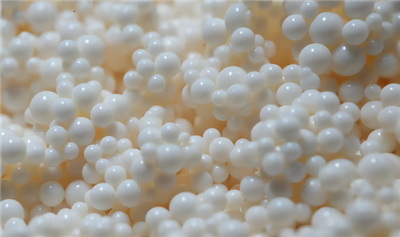Ion exchange chromatography is a commonly used method in biochemistry and analytical chemistry to separate biomolecules based on their net electric charge. This technique uses a stationary phase containing charged groups that interact with the target molecule's charged group, causing it to be immobilized and separated from other components in the mixture.
The principle behind ion exchange chromatography involves the use of a resin or a matrix composed of charged groups or ligands. For cation exchange chromatography, the stationary phase contains negatively charged groups such as carboxyl or sulfonate groups. Conversely, for anion exchange chromatography, the stationary phase contains positively charged groups such as amino or quaternary ammonium groups. The choice of stationary phase will depend on the charge of the molecule being separated.
Sample preparation is crucial before separation on the ion exchange column. The sample needs to be in a buffer solution with an ionic strength that is ideally the same as the mobile phase used on the column. This ensures that the molecules interact with the stationary phase in a predictable manner.
The molecules of the sample with an opposite charge to that of the stationary phase will interact with the resin or matrix. This retention time of the molecule will depend on the ionic strength of the mobile phase, the concentration of the counterion, and the charge and size of the molecule. Molecules with a higher charge or a larger size will take longer to pass through the column and will come out later in the elution process.
After passing through the column, the target molecule can be separated from other molecules by elution, where the ionic strength and pH of the mobile phase are altered to remove the molecule from the resin. The displacement of the molecule from the resin is achieved by a change in the counterion present, leading to a weaker interaction between the stationary phase and the molecule. The target molecule will be removed at a specific retention time.
In conclusion, ion exchange chromatography is a powerful technique used to separate biomolecules based on their net charge, making it an essential tool in biochemistry and analytical chemistry. With careful sample preparation, selecting the appropriate stationary phase, and adjusting the mobile phase conditions, targeted molecules can be successfully isolated and purified from complex mixtures.


